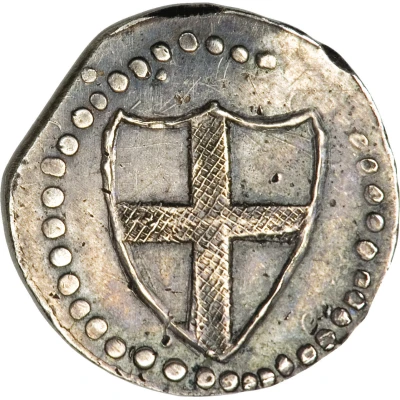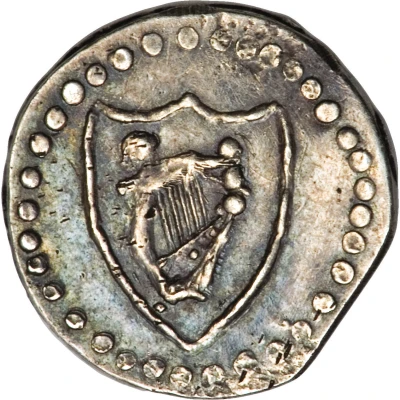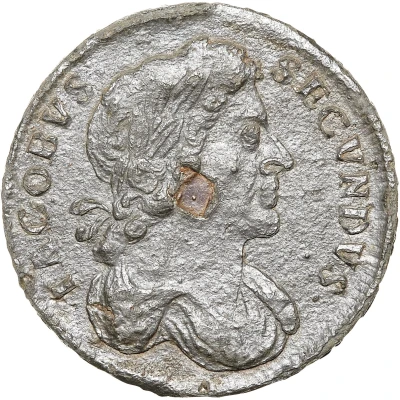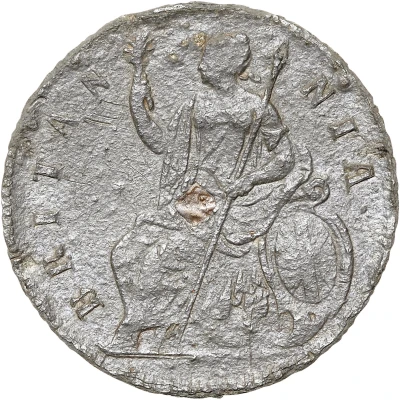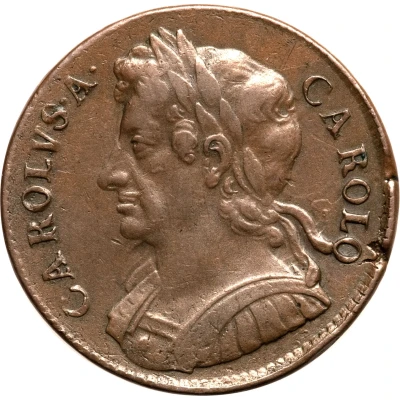


© Heritage Auctions
½ Penny - Charles II
| Copper | 11.3 g | 29 mm |
| Issuer | England (United Kingdom, British Overseas Territories and Crown Dependencies) |
|---|---|
| King | Charles II (1660-1685) |
| Type | Standard circulation coin |
| Years | 1672-1675 |
| Value | ½ Penny (1⁄480) |
| Currency | Pound sterling (1158-1970) |
| Composition | Copper |
| Weight | 11.3 g |
| Diameter | 29 mm |
| Shape | Round |
| Technique | Milled |
| Orientation | Coin alignment ↑↓ |
| Demonetized | Yes |
| Updated | 2024-10-08 |
| Numista | N#27924 |
|---|---|
| Rarity index | 71% |
Reverse
Seated figure of Britannia left, trident in left hand, olive branch in right, shield bearing the Union flag resting on left, legend around, date in exergue.
Script: Latin
Lettering:
BRITAN NIA·
1673
Engraver: John Roettier
Comment
House of Stuart restored (1660-1714), Charles II (1660-85), Milled coinage (1662-85).The original standard weight for these pieces was 40 to the pound avoirdupois (2/5 ounce or 175 grains each). However, as described below, the standard weight was reduced during 1672 to 44 to the pound avoirdupois (4/11 ounce or 159.1 grains each).
Following is an excerpt from the Department of Special Collections at the University of Notre Dame Libraries:
"Charles II (1660-1685) first produced copper halfpence and farthings in 1672. Minting began on August 5th with the production of farthings on four presses. Interestingly, Charles displayed a bust right (that is, a right profile) on all his gold and silver coins but used a bust left on his coppers. He produced copper halfpence dated 1672, 1673 and 1675 and copper farthings dated 1672-1675 and 1679. In order to produce these coins the mint needed blank planchets of the proper size and weight. However they did not have the capability of producing the rolled sheets of copper from which the blanks would be cut out. Therefore the mint was forced to import finished planchets, which they contracted with Abraham Cronstrom of Stockholm, Sweden. The initial run of coppers was produced at 40 halfpence to the pound (175 grains), with farthings proportional. However, Cronstrom had contracted to provide the copper metal at 14.5d per pound but he discovered there was a Swedish export tarrif of 2.5d per pound, raising the price to 17d a pound. The Mint would not revise the contracted price for the first shipment but they did agree to pay the increase for subsequent shipments. To offset this added cost the weight of the coins was reduced slightly during this first year of production (1672) so that halfpence were made at 44 to the pound avoirdupois or about 159.1 grains each."
Interesting fact
The ½ Penny coin of Charles II was minted during a time when the British Empire was facing a severe shortage of coinage. To address this issue, the government decided to introduce a new coin that was worth half a penny, which was a significant reduction in value from the previous coinage. This coin was made of copper and weighed 11.3 grams, making it a relatively lightweight coin. Despite its lower value, the ½ Penny coin was widely accepted and used in everyday transactions, and it remained in circulation for many years.
Price
| Date | Mintage | VG | F | VF | XF | AU | UNC |
|---|---|---|---|---|---|---|---|
| 1673 | - | - | - | - | - | - | |
| 1675 | - | - | - | - | - | - |
Values in the table are based on evaluations by sales realized on Internet platforms. They serve as an indication only for ½ Penny - Charles II 1672-1675 coin.
